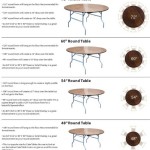Farmhouse Table Stain Colors: A Guide to Choosing the Perfect Shade
Farmhouse tables, with their sturdy construction and rustic charm, are a staple in many homes. Whether you're building your own or looking to refinish an existing table, choosing the right stain color is crucial to achieving the desired aesthetic. With a plethora of options available, navigating the world of farmhouse table stain colors can be overwhelming. This article aims to provide a comprehensive guide to understanding the various color palettes, their inherent qualities, and how they can enhance your farmhouse table.
Natural & Rustic: Embracing the Earthy Hues
For a truly authentic farmhouse feel, consider embracing natural and rustic stain colors. These shades evoke a sense of warmth, timelessness, and connection to nature. Popular choices within this category include:
- Walnut: Deep and rich, walnut stain imparts a classic, elegant warmth to the wood. It complements various wood types and creates a sophisticated ambiance.
- Cherry: Offering a slightly reddish hue with subtle undertones, cherry stain exudes a timeless elegance. It creates a luxurious feel, perfect for formal dining or adding a touch of sophistication.
- Honey: For a lighter and more approachable option, honey stain offers a warm, golden glow. It complements a wide range of décor styles and creates a welcoming, inviting atmosphere.
When choosing natural or rustic stain colors, consider the wood's grain pattern. These shades often highlight the wood's natural beauty, revealing intricate patterns and creating a unique character for each piece.
Mid-Toned Neutrals: Versatile & Adaptable Hues
Mid-toned neutral stain colors offer versatility and adaptability, allowing them to blend seamlessly into various design schemes. These hues provide a balanced approach, neither too dark nor too light, making them suitable for both traditional and contemporary farmhouse styles. Popular choices include:
- Provincial: A classic, earthy brown shade with a touch of warmth, provincial stain offers a timeless elegance. It complements a wide range of wood types and enhances the natural grain patterns.
- Driftwood: Inspired by the weathered beauty of driftwood, this color offers a soft, muted gray with subtle hints of brown. It creates a relaxed, coastal-inspired atmosphere and pairs well with various wood types.
- Weathered Oak: Inspired by the weathered beauty of aged oak, this stain adds a touch of rustic charm. It features subtle gray undertones that enhance the wood's natural texture, creating a lived-in aesthetic.
Mid-toned neutrals provide a clean canvas, allowing you to easily incorporate various accessories and furniture pieces without overwhelming the space.
Modern & Bold: Statement-Making Shades
For those who crave a bolder look, modern and statement-making stain colors offer a unique and impactful aesthetic. These shades add a touch of personality and visual interest, transforming the farmhouse table into a focal point. Popular choices include:
- Black: Striking and sophisticated, black stain creates a dramatic and modern statement. It adds a sense of depth and sophistication, ideal for contemporary farmhouse styles.
- Gray: A versatile and timeless shade, gray stain offers a modern twist on the classic farmhouse aesthetic. It complements various wood types and creates a sense of understated elegance.
- Blue: A unique and unexpected choice, blue stain adds a touch of whimsy and sophistication. It complements a wide range of décor styles and creates a calming, inviting atmosphere.
When choosing bold colors, consider the overall design and the existing color palette of the room. Ensure the stain complements the surrounding furniture and décor to create a cohesive and visually appealing space.

Farmhouse Dining Table Custom Sizes And Finish

I Built A Farmhouse Table It All Started With Paint

Diy Natural Stain For Rustic Tables Merrypad

How To Finish A Farmhouse Table

How To Stain A Vintage Dining Table Yellow Brick Home

How To Stain Wood Even If It S Your First Time Green With Decor

Diy Farmhouse Table Love Grows Wild

Weathered Gray Finish Ina Farm Table

Diy Farmhouse Table And Bench Honeybear Lane

Rustic Wood Trestle Dining Table Kitchen Farmhouse Gift
Related Posts








